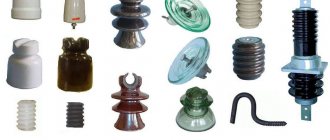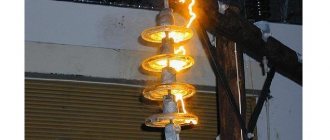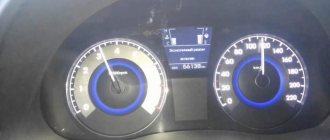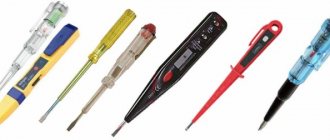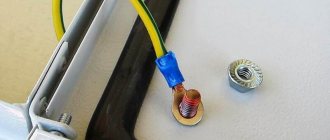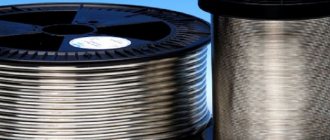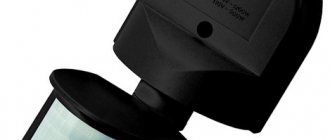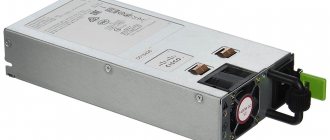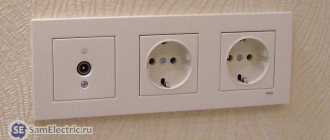Equipment types
In the operation of high-voltage equipment, reliable insulation between live parts of electrical installations and individual devices is very important. They must also be insulated from the ground. This role, as well as the fastening function of current-carrying parts, is performed by insulators of various types.
According to the most general classification, that is, from the point of view of the places of their application, they are divided into hardware, station, linear.
The first two types are used in substations, power plants, and current-carrying parts of electrical devices. They are used here as fastenings and insulate switchgear buses (switchgear). According to their functions and location, they can be walk-through or support.
More about insulators
Bushing insulators are used to insulate wires running through the walls of buildings. In addition, they carry out the removal of load switch conductors from tanks and switches. These are high-voltage porcelain insulators that have a cavity inside where a metal rod or group of busbars passes.
The so-called bushings are a type of bushing insulation designed for 110 kilovolts and higher voltages. At the bushings, the current conductor is a copper pipe. To make the internal insulation of high-voltage high-frequency bushings, in addition to porcelain, ceramics, bakelite, and other solid organics are used. Insulation can also be liquid or paper-oil.
The so-called “capacitor input” can be organized. This is when layers of special cable paper are placed on a conductive rod, and aluminum foil is laid in thin layers in the middle. Such a structure is necessary so that the potential is evenly distributed along the axis and radially. The capacitor input is usually sealed.
As for support insulators, they support buses, contact nodes of switchgears, and electrical devices. Such devices are either support-pin or support-rod. In the latter, the design is complemented by a porcelain rod with protruding ribs. They are also called wings, they protect from rain.
Physics of conductivity in solids[edit]
Electrical insulation is the absence of electrical conductivity. Electron band theory (a branch of physics) dictates that charge flows if states into which electrons can be excited are available. This allows electrons to gain energy and thereby travel through a conductor, such as metal. If there are no such conditions, the material is an insulator.
Most insulators (though not all, see Mott insulator) have a large bandgap. This occurs because the "valence" band, containing the highest energy electrons, is filled, and a large bandgap separates this band from the next band above it. There is always some voltage (called the breakdown voltage) that gives the electrons enough energy to excite in that band. Once this voltage is exceeded, the material ceases to be an insulator and charge begins to flow through it. However, this is usually accompanied by physical or chemical changes that irreversibly degrade the insulating properties of the material.
Materials that lack electronic conductivity are insulators if they also lack other mobile charges. For example, if a liquid or gas contains ions, then the ions can be made to flow as an electric current, and the material is a conductor. Electrolytes and plasmas contain ions and act as conductors whether or not electron flow is involved.
Breakdown[edit]
When exposed to sufficiently high voltage, insulators are susceptible to the phenomenon of electrical breakdown. When the electric field applied to an insulating substance exceeds the breakdown field threshold value for that substance at any location, the insulator suddenly becomes a conductor, causing a large increase in current, an electrical arc through the substance. Electrical breakdown occurs when the electric field in a material is high enough to accelerate free charge carriers (electrons and ions, which are always present in low concentrations) to a speed high enough to knock electrons out of the atoms when they collide with them, ionizing the atoms. These released electrons and ions in turn accelerate and strike other atoms, creating more charge carriers in a chain reaction. The insulator quickly fills with mobile charge carriers and its resistance drops to a low level. In a solid, the breakdown voltage is proportional to the bandgap energy. When a corona discharge occurs, the air in the area around a high-voltage conductor can be destroyed and ionized without a catastrophic increase in current. However, if the air breakdown area extends to another conductor with a different voltage, a current-carrying path is formed between them, and a large current flows through the air, creating an electric arc.
. Even in a vacuum, some sort of breakdown can occur, but in this case, the breakdown or vacuum arc is associated with charges that are ejected from the surface of the metal electrodes, and is not created by the vacuum itself.
Additionally, all insulators become conductors at very high temperatures because the thermal energy of the valence electrons is sufficient to drive them into the conduction band. [12]
In some capacitors, a short circuit between the electrodes caused by dielectric breakdown may disappear when the applied electric field is reduced. [3] [4] [5] [ relevant?
]
Overhead power lines
Now about linear insulators. They secure the wires of overhead lines. They also insulate the outdoor switchgear buses (open switchgear). There are pin and pendant insulators. The first ones received their name because of the peculiarities of their fastening - on metal pins, which are fixed in the traverses of the supporting elements. The devices hold the wires firmly on the supports. Such devices are found on power lines up to a kilovolt. Pin insulators of higher voltages, up to 35 kilovolts, are made as two-element ones.
The flexible connection between wires and supports of power lines with a voltage of 35 kilovolts or more is provided by suspension insulators. Some of them are combined into garlands (plate type). Rod insulators increase the electrical strength of lines, since their breakdown is impossible. The insulating part of the hanging fixtures is made of glass or porcelain. It is connected to the conductive rod and cap by a cement bond.
Special designs have been developed for line insulators. They allow their use in power lines in polluted atmospheres. Such devices have increased discharge rates and also increased creepage distance.
Maintenance and operation of insulators
Insulators are selected according to design and characteristics, taking into account operating conditions. During application, these elements of overhead lines or electrical installations are inspected along with other equipment.
The frequency of inspections is determined depending on the characteristics of the elements. The check is carried out at least once every six months if we are talking about external power lines. Insulating elements in installations can be checked less frequently, during the scheduled inspection periods of the units.
If the power line passes through places of heavy pollution or critical areas (industrial areas, residential areas, etc.), the frequency of inspections is reduced to once a quarter.
During the inspection, it is necessary to ensure the integrity of the insulators, the reliability of fastening, and clean the parts from dust and dirt. Defective elements are replaced with intact ones. The inspection is carried out during a power outage.
Electrical insulators are irreplaceable elements of power lines and electrical equipment. But for their reliable operation, proper selection and compliance with current standards during inspection and maintenance are required.
Requirements for insulators
Any insulator must satisfy several technical requirements. First of all, a certain electrical strength. It is defined as that electric field strength, expressed in kilovolts per meter, at which the insulating material loses its dielectric properties.
Mechanical strength is also important. It is important to counteract the forces that appear during a short circuit in the circuit between live parts of the equipment.
The insulator must maintain its performance even in all weather conditions, be it snow, hail, or rain. Heat resistance is also an important factor. Temperature changes over a wide range should not affect the electrical properties of the insulator. In addition, it must have a discharge-resistant surface.
Polymer hanging
See also:
Types of video screens for advertising.
Interesting on the topic: Flange carriages: what they are, what they are for and lubrication
Tips in the article “How to choose a video surveillance system for a private home” here.
These products are durable due to the material. In addition, they are light in weight, making them easy to transport. Resistant to various stains and also quite resistant to moisture. Finally, they have a service life of over 25 years. And all this is due to the fact that they are polymer.
Electrophysical and mechanical indicators
These include the nominal value and the breakdown voltage. The latter determines the minimum voltage that causes breakdown of the insulator. The properties of the insulator are characterized by such indicators as discharge and withstand voltage. These parameters have different values if the surface is dry and if it is wet (insulator in the rain).
Thus, there are dry-discharge and wet-discharge values of this voltage, when there is an overlap over the surface while maintaining all the insulating qualities.
Important electrophysical characteristics are the values of 50% pulse discharge voltages of both polarities.
Mechanical indicators are, first of all, the smallest force (load) of destruction, expressed in newtons. It is assumed that it is applied to the insulator cap and directed in a direction perpendicular to its axis. Dimensions and weight also matter.
Design
Structurally, all electrical insulators differ in the methods of attachment to the supporting structure and cable fastening. The main task of this product is to prevent electrical discharges; for this purpose, they are made in the form of plates or rods with ribs. These ribs are needed so that the discharge develops at an angle to the field lines. In the figure below you see examples of typical products of different shapes and designs:
What are the components of different insulators made of?
The main material for station and equipment insulators was porcelain, which fully meets the above requirements. For casings located inside, as well as components of some types of insulators filled with insulating oil, bakelite, textolite or getinax are more often used.
The so-called “metal fixtures” are metal parts that are fixed to porcelain. It is used to attach the insulator to the base, and to connect current-carrying parts of electrical devices and busbars to the insulator. It is fixed with special cementitious lubricants that have a coefficient of thermal expansion similar to that of porcelain. The insulator body is coated with glaze, which improves its electrical properties.
Thermal insulator
Heat resistance class
Heat resistance class
(temperature resistance class) is a classification of insulators based on heat resistance temperature in the Japanese Industrial Standards (JIS). It is called "heat-resistant class Y", "heat-resistant class 200", "heat-resistant class F class", etc.
| Heat resistance class | Maximum permissible temperature | Main Material | Next・Filling material |
| D | 90°С | Cotton, paper, polyethylene, polyvinyl chloride, natural rubber | nobody |
| A | 105°C | Insulating oil/natural varnish | |
| E | 120°C | Synthetic resin such as polyester, epoxy resin, melamine resin, phenolic resin, polyurethane, etc. | nobody |
| B | 130°C | Inorganic materials such as mica, asbestos and fiberglass | General glue |
| F | 155°С | Resin such as silica alkyd | |
| HOUR | 180°С | Silicone resin | |
| N | 200°C | Raw mica, asbestos, porcelain, etc. | nobody |
| R | 220°С | ||
| 250 | 250°С |
In the past, all insulators capable of withstanding temperatures above 180°C were classified as Class C. The current JIS C 4003 is subdivided, and those exceeding 250°C in the above table are provided with heat resistance grades at 25°C intervals. The method of memorizing each type should be remembered as "Yae-chan's beautiful bones are numb" (Y, A, E, B, F, H, NR).
Classification by location
External installation gives the corresponding insulating devices a greater surface development. It corresponds to a higher microdischarge voltage, which allows insulators of this type of installation to work just as reliably in rain or in a dirty state. This is their main difference from indoor insulators.
By the height of the porcelain part, insulators designed for different voltage ratings can be distinguished from each other. The gradation in the magnitude of mechanical forces for destruction is expressed in changes in diameters.
It happens that one part of the insulator is in open space, while the other is located indoors or in oil. This is exactly the case of the previously described bushings. Often such devices (for example, insulators of transformers, oil circuit breakers) are asymmetrical. It is interesting that the part of the porcelain body that is exposed to air has more developed ribs.
Advantages of the ShF model
Porcelain pin insulators are in high demand. This state of affairs is determined by the fact that they are characterized by low weight and affordable cost. The insulators are designed for operation at temperatures from minus 60 to plus 50 degrees, that is, they are suitable for all climatic zones of the Russian Federation. The insulators can withstand pulse voltages reaching up to 135 kV. The creepage distance does not exceed 400 mm. The SF model can be used in polluted industrial air and in areas where the air masses contain sand (for example, in deserts). Exact technical specifications are given in the documentation supplied with the valve. Pin insulators are characterized by resistance to mechanical and temperature influences. They do not change their characteristics throughout their entire service life. ShF insulators are resistant to negative environmental factors. The use of such fittings makes it possible to ensure the safety of personnel and equipment.
